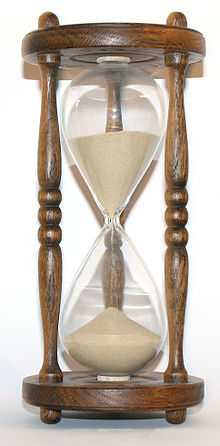Duration (music)
"Duration scale (music)" redirects here. For other uses, see
Duration series.

Simple [quadr]duple drum pattern, against which duration is measured in much
popular music: divides two
beats into two
 Play
Play .
Duration in music refers to how long or short notes are. It can also refer to how long an entire piece of music lasts. The concept of duration can be further broken down into those of beat and rhythm, where beat is seen as (usually, but certainly not always) a 'constant', and rhythm being longer, shorter or the same length as the beat.
A tone may be sustained for varying lengths of time. It is often cited as one of the fundamental aspects of music, encompassing rhythm, form, and even pitch.
Durations, and their beginnings and endings, may be described as long, short, or taking a specific amount of time. Often duration is described according to terms borrowed from descriptions of pitch. As such, the duration complement is the amount of different durations used, the duration scale is an ordering (scale) of those durations from shortest to longest, the duration range is the difference in length between the shortest and longest, and the duration hierarchy is an ordering of those durations based on frequency of use.[1]
Durational patterns are the foreground details projected against a background metric structure, which includes meter, tempo, and all rhythmic aspects which produce temporal regularity or structure. Duration patterns may be divided into rhythmic units and rhythmic gestures (Winold, 1975, chap. 3). However, they may also be described using terms borrowed from the metrical feet of poetry: iamb (weak-strong), anapest (weak-weak-strong), trochee (strong-weak), dactyl (strong-weak-weak), and amphibrach (weak-strong-weak), which may overlap to explain ambiguity.[2]
See also
References
- ↑ Winold, Allen (1975). "Rhythm in Twentieth-Century Music" (chapter 3), Aspects of Twentieth-Century Music. Delone and Wittlich (eds.). Englewood Cliffs, New Jersey: Prentice-Hall. ISBN 0-13-049346-5.
- ↑ Cooper and Meyer (1960). The Rhythmic Structure of Music, . University of Chicago Press. ISBN 0-226-11522-4. Cited in Winold (1975, chapter three).

